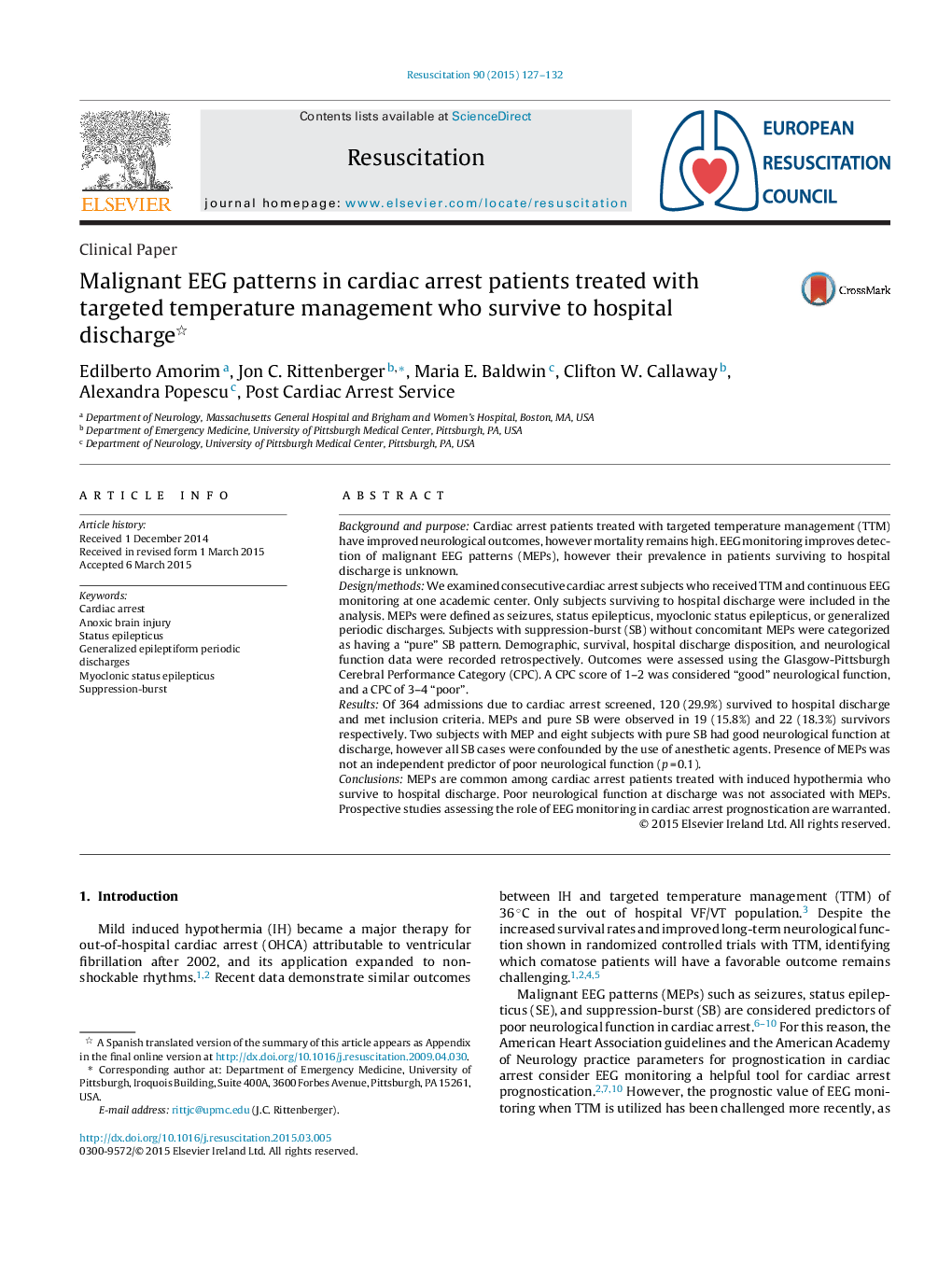| Article ID | Journal | Published Year | Pages | File Type |
|---|---|---|---|---|
| 3007945 | Resuscitation | 2015 | 6 Pages |
Background and purposeCardiac arrest patients treated with targeted temperature management (TTM) have improved neurological outcomes, however mortality remains high. EEG monitoring improves detection of malignant EEG patterns (MEPs), however their prevalence in patients surviving to hospital discharge is unknown.Design/methodsWe examined consecutive cardiac arrest subjects who received TTM and continuous EEG monitoring at one academic center. Only subjects surviving to hospital discharge were included in the analysis. MEPs were defined as seizures, status epilepticus, myoclonic status epilepticus, or generalized periodic discharges. Subjects with suppression-burst (SB) without concomitant MEPs were categorized as having a “pure” SB pattern. Demographic, survival, hospital discharge disposition, and neurological function data were recorded retrospectively. Outcomes were assessed using the Glasgow-Pittsburgh Cerebral Performance Category (CPC). A CPC score of 1–2 was considered “good” neurological function, and a CPC of 3–4 “poor”.ResultsOf 364 admissions due to cardiac arrest screened, 120 (29.9%) survived to hospital discharge and met inclusion criteria. MEPs and pure SB were observed in 19 (15.8%) and 22 (18.3%) survivors respectively. Two subjects with MEP and eight subjects with pure SB had good neurological function at discharge, however all SB cases were confounded by the use of anesthetic agents. Presence of MEPs was not an independent predictor of poor neurological function (p = 0.1).ConclusionsMEPs are common among cardiac arrest patients treated with induced hypothermia who survive to hospital discharge. Poor neurological function at discharge was not associated with MEPs. Prospective studies assessing the role of EEG monitoring in cardiac arrest prognostication are warranted.
